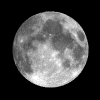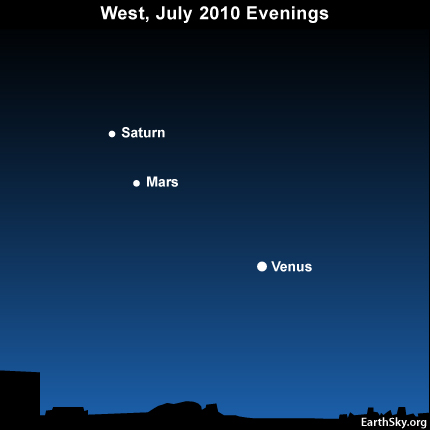Courtesy of EarthSky
A Clear Voice for Science
www.EarthSky.org [1]
 [2]
[2] [3]Look westward at nightfall to see three planets in the July evening sky. In their order of brightness, these worlds are Venus, Saturn and Mars. Venus outshines Saturn and Mars by leaps and bounds. Venus is the first “star” to pop into view after sunset.
[3]Look westward at nightfall to see three planets in the July evening sky. In their order of brightness, these worlds are Venus, Saturn and Mars. Venus outshines Saturn and Mars by leaps and bounds. Venus is the first “star” to pop into view after sunset.
If you keep watching the western sky into early August, you will see these three form a tight cluster in the west after sunset.
EarthSky’s meteor guide for 2010 [4]
By the way, it’s now a solid month past the June solstice, the longest day in the northern hemisphere. However, it’s probably just as hot – if not hotter – than it was a month ago. People often ask why the hottest weather of the year comes after the year’s longest day, on the solstice [5].
Although the June solstice does indeed have the most moments of daylight for us in the northern hemisphere, it does not – in most places – have the hottest weather. Why? The reason is that Earth’s land and oceans take some time each year to heat up after the cold winter months.
That’s why the hottest weather of the year lags for weeks or even months behind the longest day. It’s the same reason that it’s generally hotter in mid-afternoon – say around 3 p.m. – than at noon.
With respect to the passage of the months of the year, this phenomenon is extremely well known. It even has a name. It’s called the lag of the seasons.
Written by Deborah Byrd [6]
Astronomy Picture of the Day from NASA/JPL [7]
U.S. Naval Observator Astronomical Information cente [9]r
StarDate Online [10]
Sky and Telescope [11]
National Geographic [12]
Space Com [13]
Amazing Space [14]
The York County Astronomical Society [15]
Scope City [16]